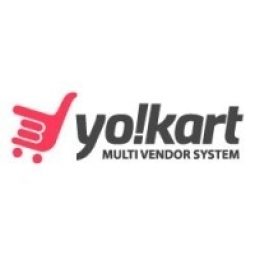Technology Category
- Platform as a Service (PaaS) - Application Development Platforms
Applicable Industries
- Cement
Use Cases
- Time Sensitive Networking
About The Customer
DueDash primarily serves startups looking for resources, connections, and knowledge to help raise funds. The platform provides these startups with access to experienced professionals who can offer their services to the market. It also connects startups with investors, guiding them through the due diligence process to secure the funding they need. In addition to startups, DueDash also serves experts and investors, providing them with visibility and access to a community of startups that need their services and investment. The platform aims to be the go-to source for startup founders looking for relevant sources for fundraising and startup services.
The Challenge
The founders of DueDash, an online startup fundraising community, faced a significant challenge in their journey to establish a platform that would connect startups with experienced professionals and investors. The primary issue was the lack of a team and resources to build a Minimum Viable Product (MVP) that could test the market. They initially used different block building systems, but this approach was time-consuming and inefficient. Another significant challenge was the inherent trust issues associated with online marketplaces. The founders understood that trust was a crucial factor for the success of their platform, but building this trust was more challenging in an online environment compared to offline engagements.
The Solution
The solution to these challenges came in the form of DueDash, a platform designed to help startups scale and grow by connecting them with experienced professionals and investors. The founders used the concept of 'bricolage', combining their diverse resources to create better outcomes. They also focused on building trust within their online marketplace, understanding that this was a critical factor for its success. To overcome the trust limitations associated with online dealings, they worked on creating a platform that was transparent and reliable. The DueDash marketplace is an extension of the DueDash community platform, providing visibility and access to a community of experts and investors. The platform also leverages data to optimize the process of selection, ensuring that startups are matched with the right experts and investors.
Operational Impact

Case Study missing?
Start adding your own!
Register with your work email and create a new case study profile for your business.
Related Case Studies.

Case Study
System 800xA at Indian Cement Plants
Chettinad Cement recognized that further efficiencies could be achieved in its cement manufacturing process. It looked to investing in comprehensive operational and control technologies to manage and derive productivity and energy efficiency gains from the assets on Line 2, their second plant in India.

Case Study
Digital Transformation of Atlanta Grout & Tile: An IoT Case Study
Atlanta Grout & Tile, a Tile, Stone & Grout restoration company based in Woodstock, Georgia, was facing challenges with its traditional business model. Despite steady growth over the years, the company was falling behind the web revolution and missing out on the opportunity to tap into a new consumer base. They were using independent software from different vendors for each of their department information and workforce management. This resulted in a lot of manual work on excel and the need to export/import data between different systems. This not only increased overhead costs but also slowed down their response to clients. The company also had to prepare numerous reports manually and lacked access to customer trends for effective business decision-making.

Case Study
Revolutionizing Construction Equipment Rental: A Case Study on ProsRent and ENO8
ProsRent, a startup that won the 'Best Financial Opportunity' and 'Best Pitch' at CodeLaunch 2016, aimed to revolutionize the way construction professionals source and rent heavy equipment. In the construction industry, project managers and contractors typically rent heavy equipment from supply companies. However, predicting inventory can be challenging, and finding the required equipment at the right time and place can be a hassle. If the preferred vendor doesn't have the required equipment, it results in wasted time and money in searching for it, often leading to higher costs due to non-preferred rates and increased delivery costs if the vendor is located far from the job site. Suppliers, on the other hand, desired access to a wider base of trusted renters that they didn't have to vet themselves and wanted to offer dynamic rental pricing based on demand and availability in their market. ProsRent's challenge was to produce a minimum viable product that was fast and first to market but also strong enough to engender loyalty and repeat business from the target market.

Case Study
AI-based Automation for Commercial Office HVAC: A Verdigris Case Study
Modern buildings are required to run longer hours, support a variety of end uses, and contribute to higher levels of economic productivity, leaving a thin margin for error. However, even the most advanced building and environmental control systems have failed to adequately support facilities and operations management. Buildings are often inefficient and the people using them are underserved. To meet occupant comfort and maintain cost and energy efficiency, a dynamic, AI-assisted approach is needed.

Case Study
Revamping EE's Legacy ERP: A Case Study on BT's Strategic Transformation
EE, even after its merger with BT, was operating its ERP estate on legacy infrastructure, hosted on the premises of a third-party supplier. This outdated system resulted in a volume-based operational model, higher time to market, longer delivery cycles, and unsatisfactory customer experience. BT recognized the need for a strategic transformation of these aging ERP systems and sought a partner who could proactively manage application services. The partner was also expected to handle development requirements associated with application management services, drive accountability, and ownership with a time and target-driven transformation of these services. BT's primary goals were to improve customer experience, reduce cycle time, and measure these improvements with precision.








